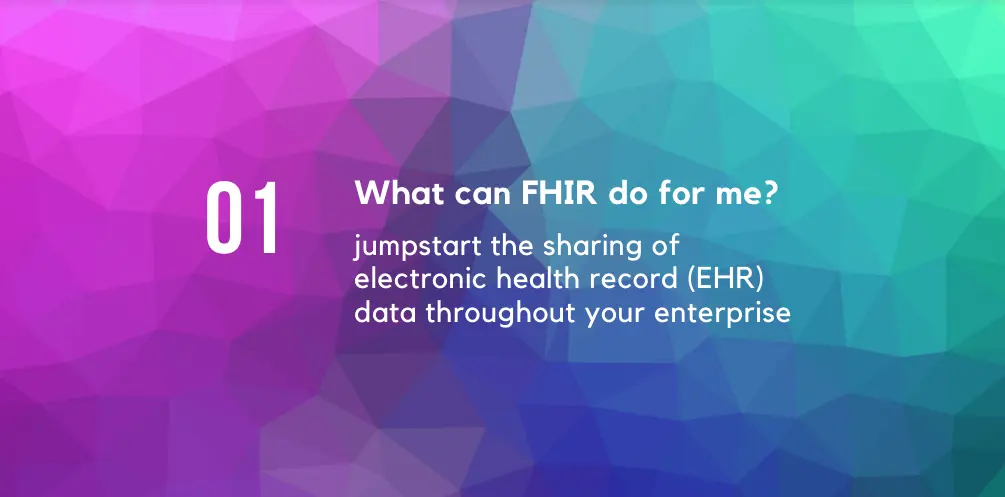Interoperability in Healthcare: The Future Is Here

Data and boundaries are like oil and vinegar.
Making better healthcare available to individuals and communities depends on better communication. That’s why it’s so important that we improve how information is shared across organizational boundaries.
We believe that building bridges between different information systems to allow stakeholders to collaborate and use data in new ways is how we will obtain the perfect healthcare system of tomorrow. There’s a word for these bridges: interoperability. In a healthcare environment, interoperability refers to the frictionless, secure exchange of electronic health information between authorized users (such as health providers, payers and patients).
As we’ll see, the benefits of this improved exchange are numerous, but in the end they all boil down to more efficient healthcare systems and better medical care for everyone.
So … What Is Interoperability In Healthcare?
Doctors and patients converse directly to communicate. Pharmacists read doctors’ handwritten prescriptions (or at least they try to decipher what’s written).
But the bulk of communication in health and medicine depends on information exchange architectures, application interfaces and data standards. And these modern healthcare systems are built on different, often inconsistent systems, making the exchange of information slow or (in some cases) not possible at all.
With healthcare data siloed behind insurmountable borders, key stakeholders can’t easily share information. That’s where interoperability comes in. Interoperability makes health information portable between these systems. And since data drives the decisions that save lives, deliver better care and reduce waste, interoperability (in many ways) is paving the way for the future of healthcare.
Health data exchange architectures, application interfaces and standards enable digitized healthcare records to be accessed and shared across the complete spectrum of care. Relevant stakeholders must be able to access, exchange, integrate and cooperatively use data in a coordinated manner.
The elements of interoperability are :
Payload
“Payload” is simply the data being exchanged. For example, if one system is using Logical Observation Identifiers Names and Codes (LOINC) codes for clinical observations and another is using Systematized Nomenclature of Medicine (SNOMED), translation is required. A common code set is needed to achieve true interoperability.
Transport
“Transport” refers to moving data from one system/provider to another. Health Information Technology (HIT) vendors need a standard to replace complex one-on-one interfaces, so The Office of the National Coordinator for Health Information Technology (ONC), a division of the U.S. Department of Health and Human Services, initiated a project to develop consistent standards.
You can refer to the ONC Health IT Dashboard for current metrics on adoption and use, as well as analysis, reporting, and datasets that monitor health information technology trends. It also has up-to-date information on the latest health IT interoperability news.
Transaction
HIT vendors have to agree on standards in order to request data from and provide information to other systems. These standards address the format of messages exchanged and center on “push” and “pull” methods for exchanging health information.
Challenges Of Interoperability In Healthcare
There are six significant challenges to interoperability facing the healthcare industry, according to an ONC report:
- Technical barriers (a lack of standards development, data quality, and patient and healthcare provider data matching)
- Financial barriers (the costs of developing, implementing and optimizing health IT to meet frequently changing healthcare requirements )
- Trust barriers (Legal and business incentives to keep data siloed)
- Administrative requirements (outdated federal documentation and administrative requirements)
- Reporting requirements (providers must report on quality measures that are not relevant or meaningful)
- IT barriers (incompatible systems complicate day-to-day use)
In 2019, the U.S. Department of Health and Human Services proposed new interoperability requirements for the healthcare industry, asking providers to:
- Contribute APIs to provider directories
- Provide consumers with direct access to their claims data online
- Deliver increased cost transparency.
While this is a step in the right direction, the drive toward true interoperability in healthcare has more complicated challenges to overcome. To address them, new technologies such as Fast Healthcare Interoperability Resources (FHIR) (an HL7 transaction standard for exchanging healthcare information electronically) have shown promise.
Benefits Of Interoperability In Healthcare
Interoperability is key to lowering costs and increasing accessibility. When IT systems and applications are more compatible, the results include lower costs, greater access, and so much more. The seamless portability of patients’ electronic health records and other information must be available, discoverable, and understandable to all stakeholders to support automated clinical decision support and other machine-based processing. Then the future we’ve all been working toward—a more perfect healthcare system for everyone—will be a reality.


